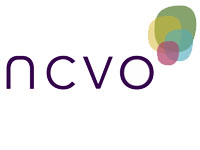Involve and Consumer Focus recently launched – ‘Making the case for public engagement’ – a toolkit that demonstrates how to make the case for public participation in monetary terms.
The authors recognise that, with public spending being cut heavily, it has never been more important to be able to make the business case for engagement. The toolkit therefore aims to help those who manage, design, deliver, plan or commission public engagement projects to understand and make the business case for engagement and present it to internal and external audiences. It can be used for all kinds of engagement from small scale ‘one off’ projects to major exercises across an entire town or wider local authority area.
In a blog linked to its launch, my colleague Edward Andersson (co-author of the toolkit and Deputy Director of Involve) presented his five top tips on how to make the most of the toolkit:
1. Don’t be daunted. Start with what you have. The toolkit was designed for non-economists. You don’t need to do a course before you start, nor do you need to gather all data on everything before you begin. Assess your benefits and costs using existing information you have, identify things you can’t measure yet and start taking steps to fill in the blanks later on. By thinking creatively you can often come up with proxy measures; you don’t always need to carry out new research. Of course it is also important not to make exaggerated claims. Know the limitations of your work and what can be said and what not based on the evidence.
2. Don’t forget the potential costs of non-engagement. All engagement seems expensive unless the costs of not engaging are measured (or approximated) alongside the costs of your project. In most cases the alternative to public engagement is not ‘do nothing’ but to carry out PR and marketing, limited consultation, market research or other activities – all of which have costs. The comparator excel sheet allows you to make these calculations.
3. Use the business case to tell stories about why engagement matters. Equations and spreadsheets won’t shift people’s thinking on their own. We are all emotional animals and it is as important to place the data in a compelling narrative as it is to gather the data in the first place. Don’t forget that people are motivated both by opportunities and threats and in the current environment many managers are driven by the latter. If you can point to real cases where no engagement led to real negative impacts (conflict, costs etc) it can be very persuasive and make a convincing case for engagement as a risk management technique in difficult times.
4. Tailor your argument to fit your audience. Your business case is not an end in itself; it is a tool to get a message across and to convince. Make sure you understand your audience and what is most persuasive to them. Will cost savings over a longer term or budget savings that accrue to different budget-holders be persuasive? Are there non-monetary measures that matter to your decision makers, such as health outcomes, an improved reputation or less conflict? Often (even in the midst of cuts) it is not just pounds and pence that matter to people. You need to understand this to make a persuasive case.
5. Finally, if you really want to persuade people, give them the opportunity to see engagement first hand. I have found few things as persuasive as being a firsthand eye witness. A dry report is no substitute for a lived experience. The business case is only part of a wider process of educating colleagues and partners in the merit of engagement.
 Subscribe to our project updates
Subscribe to our project updates

